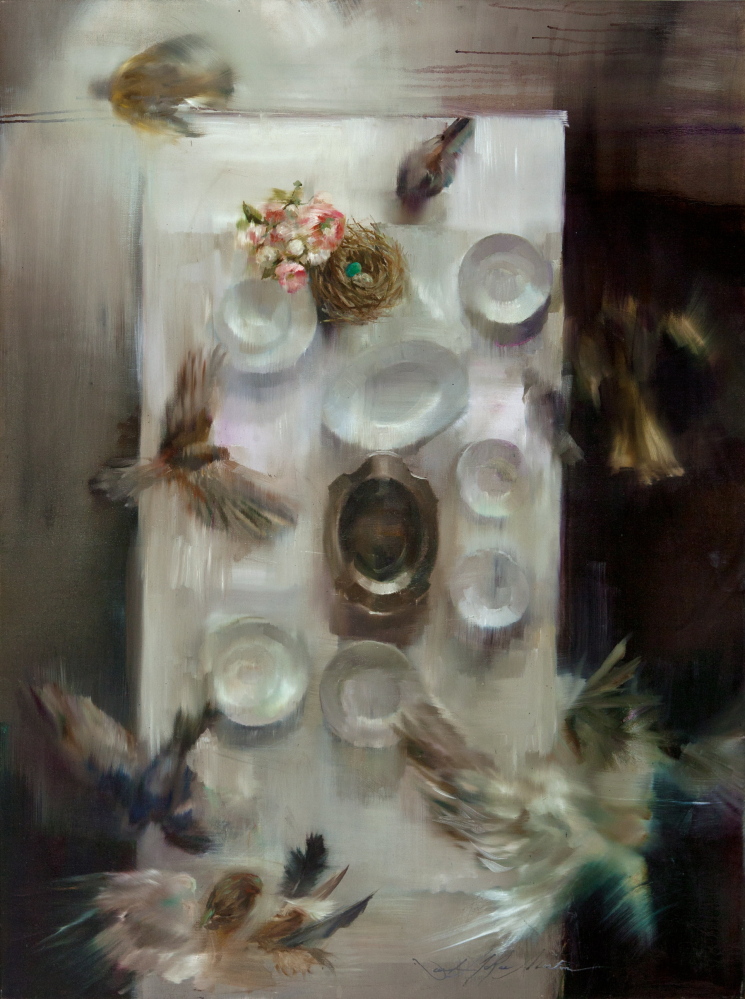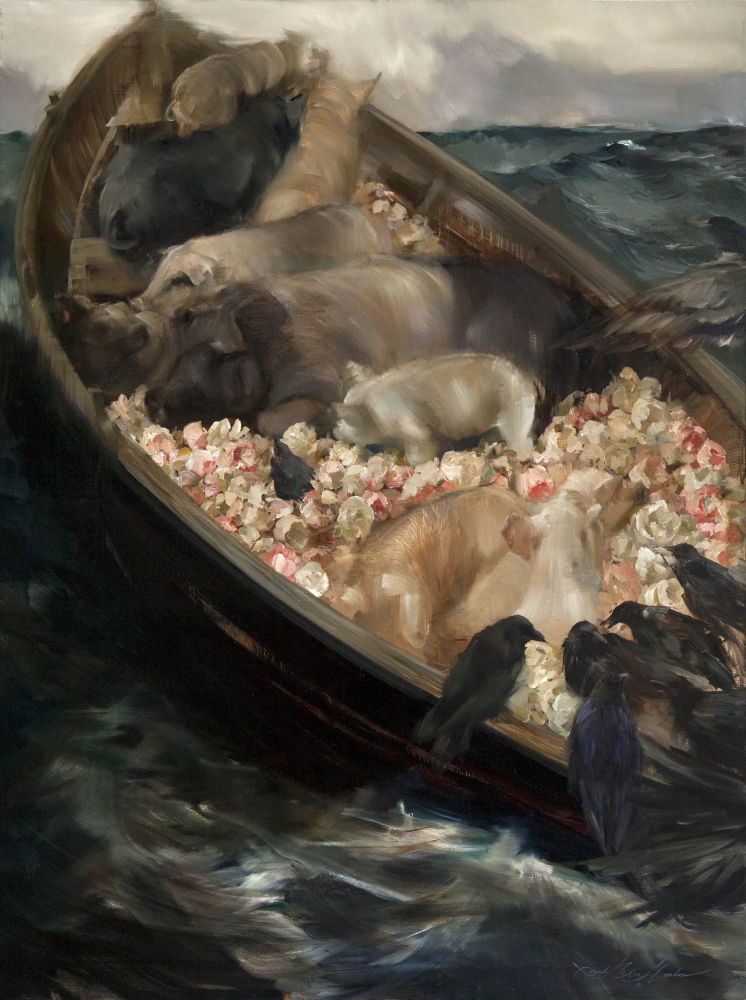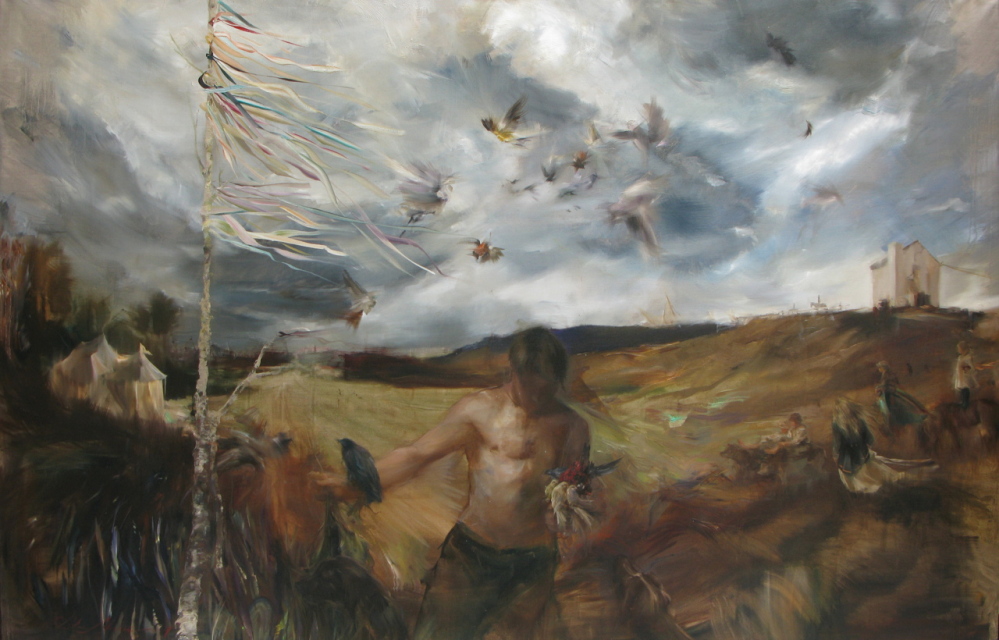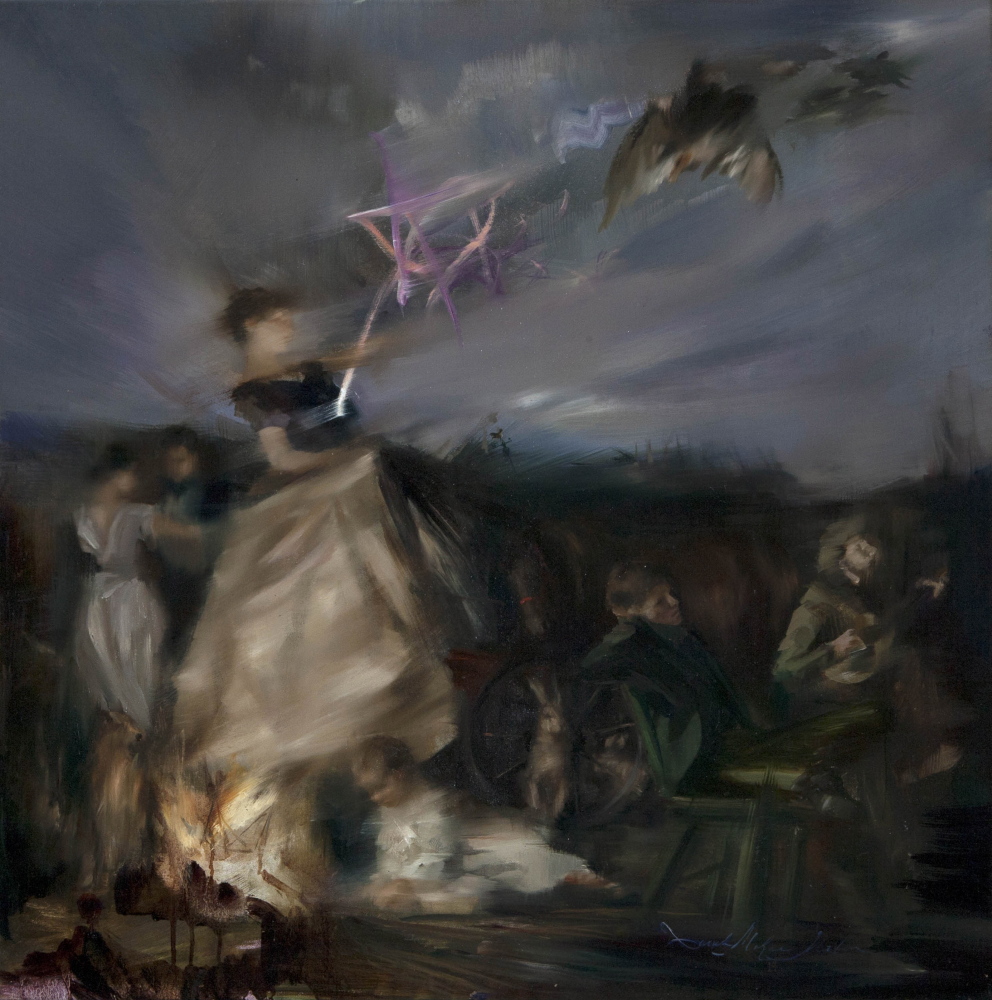More than any other leading place for painting in America, Maine has maintained a healthy relationship with the 19th century. While Marsden Hartley casts the greatest shadow over our modernist painters, Winslow Homer remains our greatest inspiration: Homer, after all, was a technical maverick who turned away from the craft of academic painting. He was fiercely independent.
For the casual viewer not deeply versed in academic painting, it’s hard to see Homer’s iconoclasm. Homer became so popular and successful that we have come to see him as the standard for the time – instead of the anti-establishment maverick he was. While his talent was critically acknowledged, Homer was seen as an unrefined radical because of his preference for thick and direct strokes over the dominant academic approach of glazing thin layer on translucent layer of oil paint.
Just as the revolutionary Impressionists were so successful that we can no longer see them as revolutionaries, Homer pioneered a radical brand of American painting. To fully appreciate Homer’s achievement requires seeing it in the light of the then-dominant academic painting across the pond. But the possibility of this conversation is slipping away from our general art chatter as our current post-modern culture has generally replaced rigorous historical understanding with the easy convenience of meme: the American cultural myth that “anything goes.”
Not so, with Sarah McRae Morton’s work. Her exhibition, “The Impossible Sight of a Ship,” is driven by a critical self-awareness – a sort of cultural archeology of the self – and Morton matches the depth of her subject with painterly erudition and ability. Her most striking works appear as a surreal revisiting of 19th-century painting rendered in a hand whose chops include academicism and an eye to savvy contemporary painters such as Gerhard Richter and Odd Nerdrum.
While her talent is impressive, what sets Morton apart is her sense of content. She paints personal experiences or narratives as scenes soaked in art history. But while it’s the personal elements that inspire Morton, they are largely burned up as fuel on her path to making a completed painting. In other words, the personal energies are sublimated, and what we are left with are the traces of painting and painterly culture. And while Morton’s studies and studio practice have taken her from the Pennsylvania Academy of Fine Art to Rome, Norway and, among other places, the Skowhegan School of Painting and Sculpture, “The Impossible Sight of a Ship” is truly a show of Maine painting because the state and its Homer-led artistic legacies clearly have a sort of gravitational pull on her painterly psyche.
Morton’s work generally falls into two categories: portraits and dream narratives. The portraits are more conventional because the primary vehicle is the sitter – the art history is a secondary import. One subject, for example, is transformed into Thomas Sully’s 1820 “Torn Hat.” Others exude the feelings of iconic portraits by Auguste Renoir, Edgar Degas or James McNeill Whistler.
But Morton’s most ambitious paintings take on the narrative complexity of the “Salon Machines” that dominated 19th-century Parisian painting – tableaux. She turns Homer’s 1885 “Fog Warning” – a fisherman in a halibut-quarry laden dory rising on a swell – into Théodore Géricault’s seminal “Raft of the Medusa” (1819) but laden with hogs and flowers in a sort of mashup of Wyeths, local food fare and the Pre-Raphaelite elegance of John Williams Waterhouse, whose “Ophelia” and “Lady of Shallot” seem to haunt many of Morton’s dreamscapes.
Morton’s most ambitious tableau is the 9-by-6-foot “First Flight,” set on a windswept hilly pasture under an angry El Greco sky. In the center is a shirtless powerful male figure whose shadow-faced solidity reminds us of Jean-Francois Millet’s 1850 “Sower.” But this man seems to be releasing birds (rendered in Richter-smeared strokes) into the whirlwind flock gathering above his head. The wind also tugs at the circus tents in the left mid-ground, the ribbon-dancing Goya-esque Maypole (her favored leitmotif in this show) behind him and the Homer-inspired figures in the field off to the right.
In the Baroque spirit, the entire scene swirls overwhelmingly (emotionally as well as physically) so that we don’t try to solve it as though it had a single, parsable meaning. Instead, we sense the emotion and the torrent of unfocused mental energy that fills the sails of this memory-soaked dream landscape. It is every bit as compelling as it is alarming.
In “Francis’s Cape,” a Vermeer interior spills forward with anachronistic Rococo wallpaper rendered with the looseness of a brushy wash. Another Vermeer figure in a yellow dress is reprised in “Secretly Sewing a Letter to Hirst,” but this time she is cut off in the circular center of an otherwise black canvas as though under a microscope – or under surveillance.
Unlike the sentimentalism of Sully (that gets hung on Jamie Wyeth – who is a major lurking presence in this show), Morton has a diplomatic touch when she engages genuinely emotional topics. In her “Last Word Before the Joints of the Chair Creaked,” we look straight down on a spare Amish dinner table in a move that makes the rectangular shape funerary while removing us from any corporeal viewpoint. Flutter-blurred birds hover throughout the scene like the punctuating presence of the Holy Ghost. Clearly it is a story about untimely death, but it is bittersweet – and elegantly elegiac.
Morton’s most complete painting is “The Ark of the North Country Girl and the Cape of Curiosity.” Set in a palatial interior, the scene is both theatrically compelling and completely irrational. It is a dream set. Seen from below is the keeled hull of a sailboat-ark, over the rail of which peer a horse and several bestial colleagues. Surrounded by chickens and white ghostly figures, a boar stands on the checkered ball room floor, facing off with the viewer. An impossible wind flutters the myriad ribbons set on a rigging-shaped Maypole. It’s a dream scene but, having been painted in a rushed but elegant hand, becomes a vision.
Morton includes an old-school “annual” self-portrait – and it is a fine painting in the lineage of Jamie Wyeth’s (rejected) portrait of JFK. Her real self portrait is as the gypsy dancer from John Singer Sargent’s masterpiece “El Jaleo.” Set among the guitarists (instead of before them, monstrously plastered by Sargent against the wall), the gypsy dancer paints in the air with a sparker at a campfire party. It is a masterful scene – poetic, but absolutely real.
Morton clearly seems to be taking fragments of her real world – people, animals, things, experiences and so on. By releasing them into a world of painting, memory-soaked with iconic images, they become players in a world not of fantasy but of real-life imagery guided by the familiar. For Morton, art isn’t affect but a common cultural language deeply seasoned with history, memory and meaning.
Freelance writer Daniel Kany is an art historian who lives in Cumberland. Contact him at:
dankany@gmail.com
Twitter: @dankany
Send questions/comments to the editors.







Comments are no longer available on this story